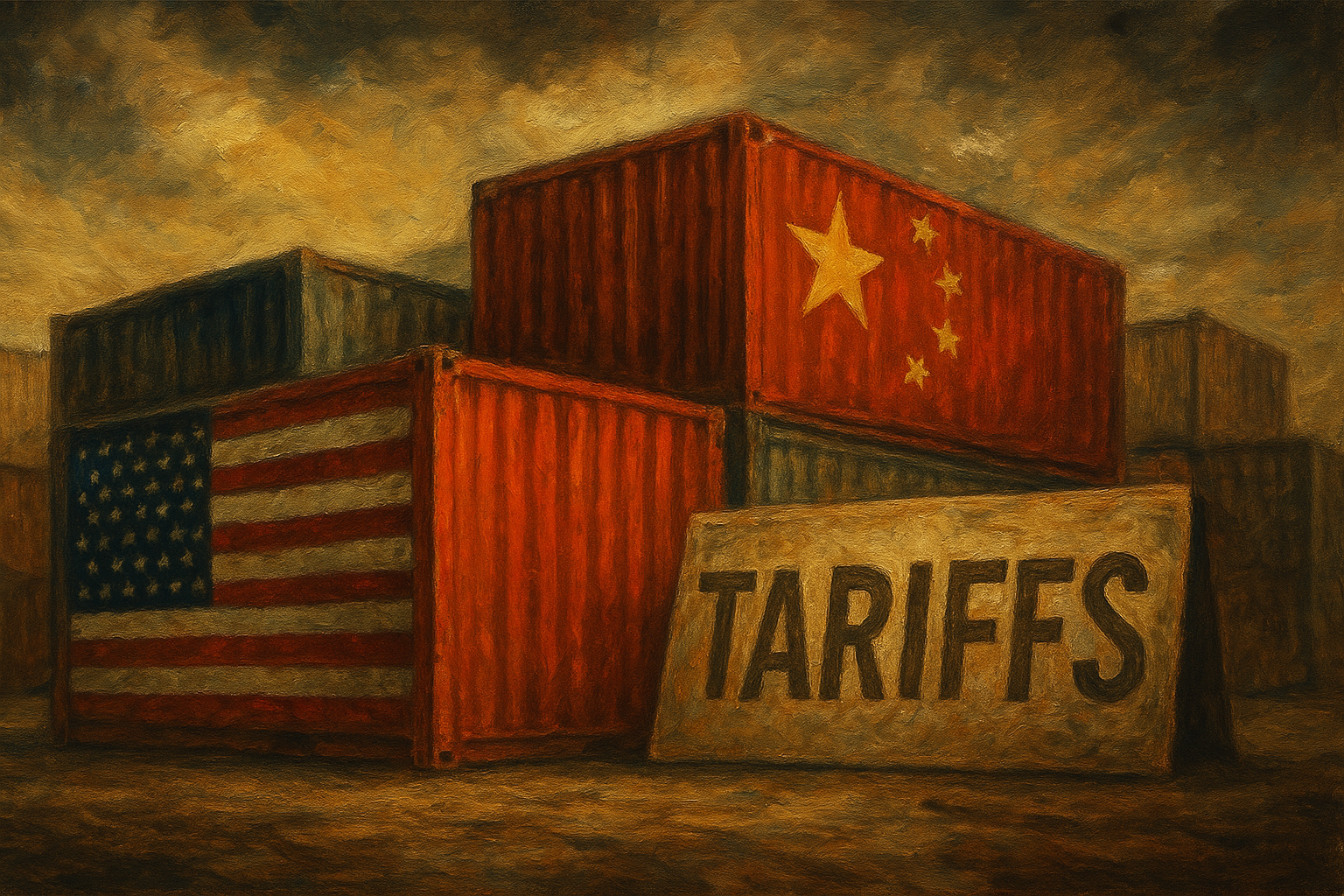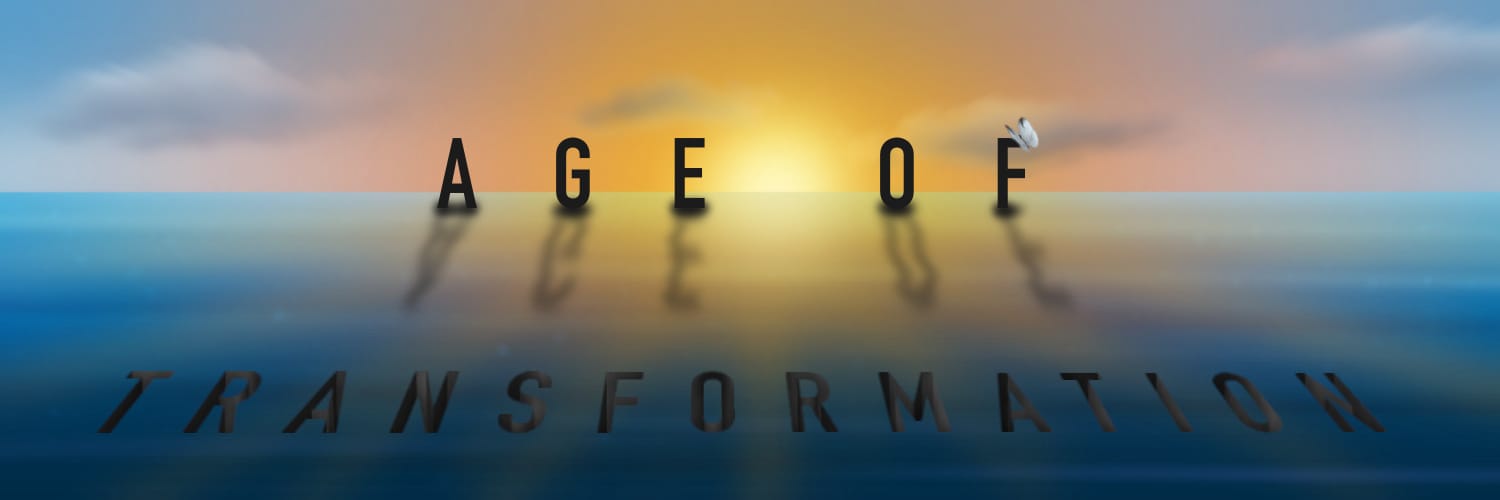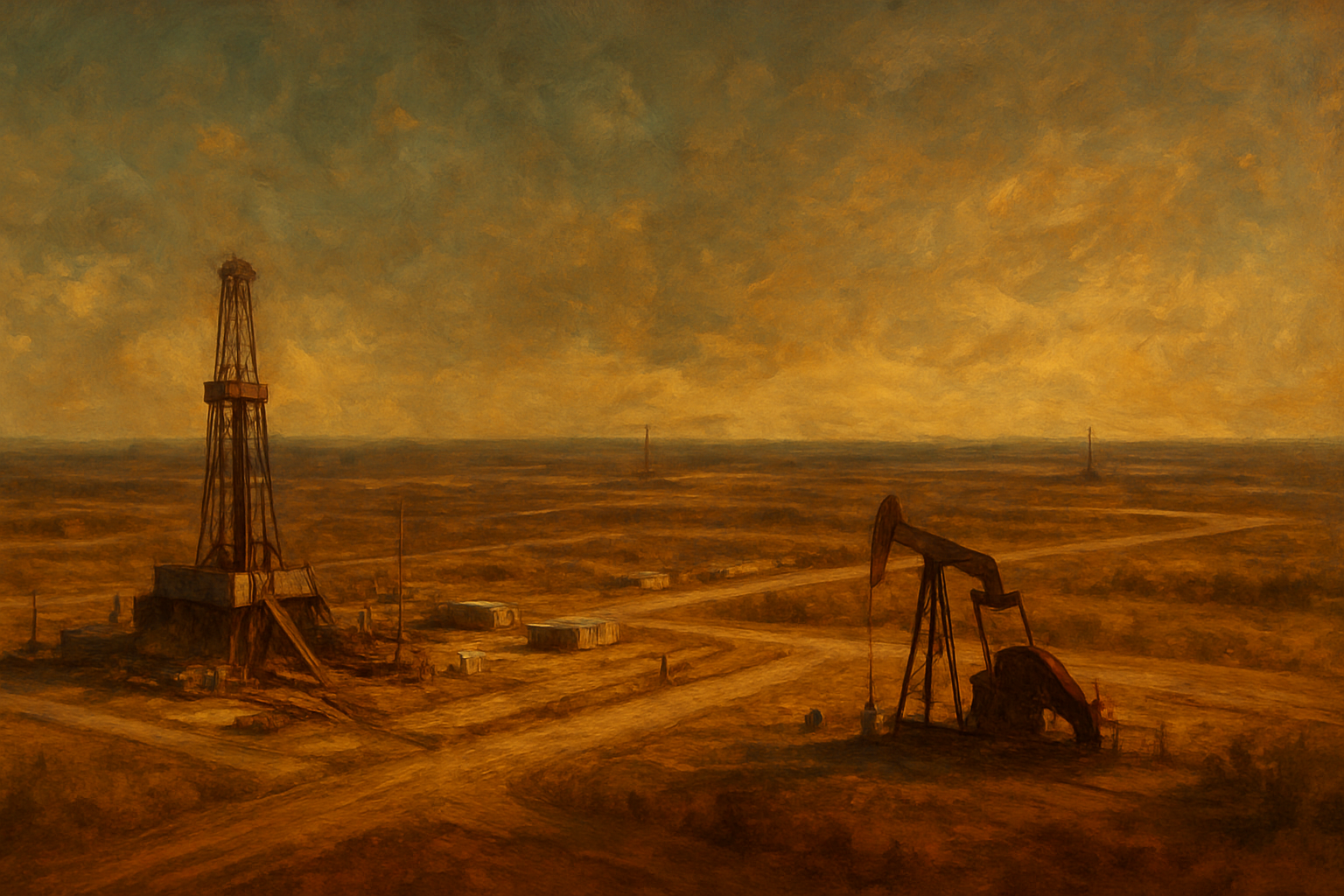1. THE SHIFT BENEATH THE SURFACE
The structural underpinnings of the global economy are being reconfigured by converging pressures in trade policy, energy sourcing, and geopolitical alignment.
In the United States, producer prices rose 0.9% in July - the largest monthly increase in more than two years - as newly imposed tariffs fed directly into the cost base of goods and services. This is a textbook example of policy-induced inflation, where protectionist measures intended to shield domestic industry also magnify input costs and tighten liquidity, raising financing risk across the supply chain.
In parallel, the digital economy’s energy metabolism could be shifting toward firm low-carbon baseload. Equinix’s commitment to procure more than 1 GW of advanced nuclear capacity signals that hyperscale data and AI workloads are becoming decisive drivers of utility-scale investment decisions. This is an emergent demand-pull mechanism for nuclear deployment, independent of conventional climate policy levers, and an early sign of how AI infrastructure will shape the grid mix. The good news here is that nuclear is not fossil fuels, and a major AI player is seeking reliable sources of cleaner, cheaper electricity. The bad news is that nuclear is costly, experiencing diminishing returns, and takes too long to build (unlike solar, wind and batteries).
At the geopolitical level, trade fragmentation is deepening. Brazil’s preparation of retaliatory tariffs on U.S. goods in response to Washington’s latest duties highlights the growing normalisation of bloc-based economic rivalry. Such moves risk locking global trade into a retaliatory feedback loop, eroding the resilience and efficiency of cross-border supply networks, and accelerating the decoupling of strategic industries.
2. HUMAN SYSTEM
Signals from the Engine Room (Material Systems in Flux)
ENERGY
What’s Breaking Down?
The IEA’s warning that a global oil glut is widening despite OPEC+ cuts underscores a late-cycle oil market dynamic: output restraint is no longer sufficient to sustain prices when structural demand erosion is underway. High-cost producers face increasing margin compression, elevating the risk of underinvestment, stranded assets, and fiscal instability in petro-dependent economies.
In clean energy, policy turbulence is introducing new headwinds. The U.S. administration’s tightening of wind and solar tax credit eligibility rules adds political risk to project financing, potentially delaying or downsizing capacity additions. In China, pricing reform is cooling what had been a record-breaking solar installation boom, reminding investors that policy recalibration in dominant markets can quickly slow deployment trajectories.
What’s Scaling Up?
The IEA’s mid-year electricity update confirms that renewables remain the primary driver of global electricity demand growth, cementing their role as the system’s new capacity backbone. China’s 212 GW of solar and 132 GWh of storage added in the first half of 2025 marks the largest six-month expansion of clean generation and storage capacity in history. In the UK, the addition of 4.4 GW of grid-scale batteries between January and July points to an acceleration in storage deployment, significantly increasing the grid’s capacity to integrate variable renewable generation.
Want deeper insights? Get access to detailed macrointelligence, scientific white papers, and investor briefings by subscribing to premium...
MOBILITY
What’s Breaking Down?
Global EV sales growth slowed to 21% in July, a notable deceleration from previous years, indicating that cost barriers, interest rates, and charging infrastructure gaps are constraining mass-market adoption. This slowdown comes just as supply chains for batteries and components are expanding, raising the risk of oversupply in certain markets if demand lags.
European automakers are signalling unease with regulatory timelines. The Mercedes chief’s call for a “reality check” on the EU’s 2035 internal combustion engine ban reflects concerns about aligning industrial competitiveness with decarbonisation mandates, especially given uneven adoption rates across member states.
In maritime transport, the shift toward green fuels such as methanol and ammonia remains slow. Without accelerated infrastructure build-out, fuel availability and cost will limit uptake, keeping shipping emissions well above Paris-aligned trajectories.
What’s Scaling Up?
Italy’s €600 million EV incentive package is designed to stimulate demand while anchoring manufacturing domestically, boosting local value capture.
In the UK, continued expansion of the public charging network addresses one of the main consumer adoption barriers: range anxiety.
In India, GreenLine’s $46 million investment in electric heavy trucks signals that electrification is extending into the heavy-duty segment - historically one of the hardest to decarbonise - creating potential demand for high-capacity charging infrastructure and new battery chemistries.
MATERIALS
What’s Breaking Down?
Northvolt’s bankruptcy delivers a serious blow to Europe’s ambitions for domestic battery manufacturing capacity. The collapse underscores the vulnerability of capital-intensive gigafactory projects to shifting market conditions, cost inflation, and financing constraints, and may slow regional efforts to secure supply-chain sovereignty in energy storage.
China’s rare-earth export volumes fell sharply in H1 2025, coinciding with a government crackdown on hoarding. As the dominant global supplier, any reduction in Chinese exports tightens markets, creates price volatility, and pressures downstream industries dependent on these materials for high-tech and clean-energy applications.
In the copper market, the U.S. government’s abrupt imposition of tariffs followed by exemptions triggered sharp price swings. Such policy-driven whiplash destabilises a critical input for electrification and renewable infrastructure, complicating investment planning for miners and manufacturers alike.
What’s Scaling Up?
India’s IREL is pursuing strategic partnerships with Japan and South Korea to expand high-performance rare-earth magnet production capacity. This diversification effort supports allied supply resilience, reducing dependence on Chinese dominance and creating opportunities for co-developed manufacturing technologies.
In Australia, BHP, Santos, and Woodside are collaborating on a CO₂ capture and storage hub designed to decarbonise steelmaking. If realised, the project could serve as a transitional pathway for one of the most emissions-intensive industrial sectors, aligning incumbent players with emerging low-carbon market requirements.
FOOD
What’s Breaking Down?
Severe flooding in southern China has killed at least 10 people, displaced over 1.2 million, and inundated extensive cropland. The disruption to agricultural production in one of the world’s key food-producing regions highlights the exposure of global food security to increasingly volatile hydro-climate events.
In Serbia, a protracted drought has forced the government to make emergency fodder purchases to sustain livestock herds. The episode illustrates the systemic risk to meat and dairy supply chains from heat stress and water scarcity, particularly in regions lacking large-scale irrigation capacity.
What’s Scaling Up?
On the global commodities front, rice prices have dropped to their lowest level in eight years following record harvests and the relaxation of export bans by key producers. This price relief is particularly significant for import-dependent countries facing persistent inflationary pressures in other staples.
In Eastern Europe, Ukraine’s forecast for a higher 2025 grain harvest - alongside plans to expand winter wheat planting - strengthens the resilience of Black Sea export capacity. Given the region’s role in supplying grain to North Africa and the Middle East, these developments have outsized implications for regional stability and food affordability.
Want deeper insights? Get access to detailed macrointelligence, scientific white papers, and investor briefings by subscribing to premium...
INFORMATION
What’s Breaking Down?
The surge in AI and data centre activity is reshaping electricity demand patterns. In the PJM Interconnection - the largest U.S. grid - power costs have spiked as energy-intensive compute loads strain capacity. This escalation not only raises operational costs for energy users but also increases volatility in wholesale markets.
Underlying these pressures is a critical equipment bottleneck. The U.S. faces a shortfall in transformer supply, a key constraint on grid expansion and modernisation. Without accelerated manufacturing capacity, electrification and renewable integration timelines could slip, delaying the monetisation of clean-energy investments.
In the cyber domain, a foiled attack on a Polish city’s water supply underscores the growing vulnerability of essential services to digital disruption. This reinforces the need for critical infrastructure operators to integrate robust cyber-physical security strategies into resilience planning.
What’s Scaling Up?
The U.S. General Services Administration’s approval of OpenAI, Google, and Anthropic for federal AI procurement channels signals the mainstreaming of generative AI tools in public-sector workflows. This could drive rapid capability scaling, but also deepen energy demand and data governance challenges.
In the UK, a new policing policy allowing disclosure of suspects’ ethnicity aims to pre-empt disinformation campaigns that exploit identity-based narratives. While narrow in scope, it is a governance adaptation to the weaponisation of information ecosystems.
Signals from the Control Room (Operating Paradigm in Transition)
GOVERNANCE
What’s Composting?
The UN plastics treaty talks in Geneva failed to reach a binding deal on capping virgin plastic production, exposing entrenched divides between major producer and consumer nations and delaying coordinated global action on pervasive pollution.
In the United States, President Trump’s “debanking” executive order has alarmed the banking sector by restricting institutions’ ability to terminate services over reputational or risk concerns, politicising compliance processes and increasing potential exposure to illicit activity.
U.S. diplomats have been instructed to lobby against the EU’s Digital Services Act, deepening transatlantic divergence over digital platform regulation and forcing multinational tech firms to navigate increasingly fragmented compliance regimes.
What’s Blossoming?
Germany’s cabinet has approved a bill to accelerate CO₂ storage infrastructure, designating it an overriding public interest, streamlining permits, and enabling the repurposing of existing gas infrastructure - reducing investor risk and opening the door to multi-million-tonne annual capacity.
In Ecuador, the Constitutional Court suspended key provisions of a new security law that critics argued would undermine civil liberties, reinforcing judicial independence as a check on executive overreach even under heavy political pressure.
The EU’s AI Act governance framework is now operational, with national oversight bodies and regulatory sandboxes in place, moving from legislative text to enforcement and real-world compliance - a shift toward proactive, adaptive regulation in the emerging AI economy.
ECONOMY
What’s Composting?
U.S. producer prices surged 0.9% in July, the sharpest rise in over two years, as new tariffs filtered into the cost base. This tariff-driven inflation raises stagflation risk by combining upward price pressure with potential demand suppression, increasing operational uncertainty for capital-intensive industries.
India–U.S. trade talks collapsed, closing a window for strategic supply-chain realignment between two major economies. The failure delays diversification away from China-centric manufacturing hubs and limits near-term opportunities for bilateral investment flows.
The IEA’s assessment that oil oversupply persists despite OPEC+ cuts reinforces bearish market fundamentals, eroding fiscal buffers for petro-states and threatening upstream investment viability in high-cost basins.
What’s Blossoming?
GM will import low-cost lithium-iron-phosphate batteries from CATL for its U.S. EV models, reducing production costs and increasing affordability - a potential catalyst for expanding market share in the mass EV segment.
Antofagasta’s first-half profits jumped 49% on stronger copper prices, reflecting the continued strategic value of transition metals and the potential for upstream producers to capture outsized margins during demand surges.
The IEA’s mid-year electricity update confirms that clean power sources are meeting the bulk of new electricity demand, reinforcing the investment case for grid modernisation, storage build-out, and diversified renewable portfolios.
Want deeper insights? Get access to detailed macrointelligence, scientific white papers, and investor briefings by subscribing to premium...
CULTURE, WORLDVIEW, VALUES
What’s Composting?
A Thai art gallery removed China-critical artworks after diplomatic pressure from Beijing, highlighting the growing reach of geopolitical influence into cultural spaces and the shrinking autonomy of artistic institutions in politically sensitive contexts.
The EU is moving to reduce reliance on U.S. climate data amid policy rollbacks in Washington. While framed as a resilience measure, the shift risks fragmenting the global climate knowledge commons, slowing coordinated scientific responses to planetary risks.
What’s Blossoming?
Anthropic lost its appeal in a copyright case brought by authors, potentially strengthening norms around intellectual property in the AI era and clarifying legal risk boundaries for developers of generative models.
A pine marten recovery initiative has joined the European Rewilding Network, expanding a continent-wide effort to restore predator-prey balance and biodiversity corridors. Such initiatives not only revitalise ecosystems but also shift cultural narratives toward valuing ecological complexity and coexistence.
3. EARTH SYSTEM
Ecosystem Breakdowns
Severe flooding in southern China has killed at least 10 people, displaced over 1.2 million residents, and inundated large areas of cropland. The scale and intensity of the event highlight the increasing frequency of hydro-climate extremes and their direct impacts on food production, infrastructure, and public health.
Western Australia has suffered its worst coral bleaching event on record, with severe mortality across ~1,500 km of reef caused by prolonged marine heatwaves. This mass bleaching further erodes one of the planet’s most biodiverse marine ecosystems and reduces the resilience of coastal economies dependent on fisheries and tourism.
Regenerative Breakthroughs
The U.S. Interior Department has approved $102.9 million for wetland conservation projects, funding the protection and restoration of over 548,000 acres across multiple states. These wetlands provide critical ecosystem services, including flood mitigation, carbon sequestration, and biodiversity support.
The Open Rivers Programme has awarded funding to 24 new river restoration projects in Europe, prioritising dam removals and fish-passage improvements to reconnect fragmented waterways and restore aquatic ecosystem health.
A global shark reintroduction initiative has reported measurable progress in restoring locally extinct shark populations. The project demonstrates how targeted rewilding strategies, informed by ecological science, can begin to reverse biodiversity loss at species and ecosystem levels.
STRATEGIC FORESIGHT
The breakdown dynamics this fortnight highlight the intensifying stress fractures across trade, energy, materials, and ecological systems. Tariff-driven inflation in the U.S. is feeding into global cost structures, while retaliatory measures from major trading partners are accelerating a shift toward bloc-based trade patterns. Oil’s persistent oversupply, despite coordinated production cuts, signals weakening demand resilience and raises the prospect of prolonged price depression for high-cost producers. Critical-materials volatility - from China’s rare-earth export slump to U.S. copper policy whiplash - is injecting instability into clean-tech manufacturing pipelines. Infrastructure vulnerabilities, including transformer shortages and cyber risks to essential services, threaten to slow the pace of electrification and erode public trust in core systems.
Breakthrough signals point to a parallel acceleration in distributed, modular, and regenerative capacity. Record-scale solar-plus-storage deployment in China, rapid battery storage build-out in the UK, and targeted EV incentives in Europe and India are expanding the foundations of low-carbon infrastructure. Governance innovations, from Germany’s accelerated CO₂ storage framework to the EU’s operational AI Act oversight, are translating policy into executable capacity. On the ecological front, large-scale wetland restoration, river reconnection, and targeted marine species recovery show tangible progress toward rebuilding biosphere resilience.
For investors: The near-term opportunity lies in assets positioned at the intersection of policy enablement and infrastructure readiness - grid-scale storage, critical-materials supply secured through allied partnerships, and industrial decarbonisation platforms. Monitor hardware bottlenecks in transformers and grid components as potential drag factors on deployment timelines. Metals-market volatility offers early signals for capex timing, while trade-policy fragmentation increases the premium on geographically diversified supply chains.
For citizens: Resilience gains will be greatest where adaptive infrastructure is funded and delivered locally - from decentralised energy systems to bioregional food and ecosystem restoration projects. Engagement in governance processes that accelerate enabling frameworks, rather than only setting targets, can help shift resources toward practical capacity-building. Organising at the bioregional scale to integrate energy, food, and ecological regeneration offers a pathway to greater autonomy in the face of legacy-system volatility.
If you appreciated this piece, sign up to get this newsletter delivered straight to your inbox for free. Or join premium to get access to deeper insights, white papers, scientific research and macrointelligence reports
Already have an account? Log In







